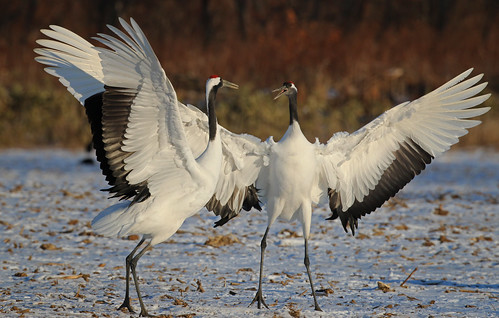
Avian Symbolism in China: A Photographic Journey.
Birds of China

During my travels in China, I learned that the word for bird, ‘niao’, has an interesting cultural significance. Not only does it refer to the feathered creatures that I love to photograph, but it also carries a secondary meaning as a slang term for penis. Additionally, in Chinese culture, a bird is often used as a symbol to represent a young man who is courting the woman he loves. I found this linguistic and cultural connection to be a fascinating aspect of my bird-watching experiences in China.
As a travelling photographer with a keen interest in avian symbolism, I’ve discovered that certain birds in China hold a special cultural significance. Below, I’ll delve into some of the most notable examples that I’ve encountered during my travels.

Crane
During my travels in China, I’ve discovered that the crane is a bird that holds great symbolic importance in Chinese culture. It’s often associated with longevity and wisdom, and is frequently depicted in artwork alongside other symbols of eternal youth, such as pine trees, deer, or stones. According to one Chinese fable, cranes who reach the ripe old age of 600 no longer need to eat, further cementing their association with longevity and immortality. In Chinese art and literature, immortals are often depicted riding red-crowned cranes, underscoring the bird’s significance in the culture’s mythology and folklore.
As a passionate bird-watcher and travelling photographer, I’ve encountered many avian species with fascinating cultural significance during my travels. One such bird is the crane, which holds a special place in Chinese culture as a symbol of nobleness, purity, loyalty, and long-lasting love in marriage.
When depicted alongside bamboo, cranes are considered an emblem of nobility and purity. These graceful birds are also known for their monogamous behavior, staying with one partner until death. As a result, they’re often associated with loyalty and long-lasting love in marriage, making them a popular motif in Chinese weddings and other celebrations.
I’ve had the pleasure of observing cranes in their natural habitats, and their elegance and grace never fail to impress me. Whether soaring through the skies or wading through shallow waters, these birds embody a sense of peace and tranquility that is truly awe-inspiring.
Overall, the crane’s importance in Chinese culture and mythology only adds to my appreciation of these majestic creatures. As a photographer, I’m always thrilled to capture their beauty through my lens and share it with others.

Eagle
As a travelling photographer with a deep appreciation for avian symbolism, I’ve encountered many birds with fascinating cultural significance during my travels. One such bird is the eagle, which has long been considered a symbol of strength and power.
In ancient times, the Huns – who journeyed through central Asia from the 1st century BC to the end of the 2nd century AD – viewed the eagle as a symbol of the ruler. The bird’s strength and commanding presence made it a fitting emblem for those in positions of authority and leadership.
Interestingly, when the eagle is depicted struggling with a snake in artwork, the reference is actually to the Indian garuda bird. In Hindu mythology, the garuda is a legendary bird that is known for its ability to swoop down and snatch snakes from the ground, much like an eagle. As such, the image of the eagle and snake is actually a fusion of Indian and western mythologies, underscoring the complex cultural connections that exist between different regions of the world.
As a photographer, I’m always on the lookout for opportunities to capture these birds of prey in their natural habitats. Their fierce beauty and commanding presence never fail to inspire me, and I’m constantly amazed by the stories and legends that have sprung up around them over the centuries.

Magpie
As a travelling photographer with a keen interest in avian symbolism, I’ve come across many birds with fascinating cultural significance during my journeys. One such bird is the magpie, which is considered a symbol of joy and good luck in Chinese culture.
In fact, the magpie is often associated with happy events such as the arrival of a guest or the announcement of good news. Its presence is also said to bring good omens and married bliss, making it a popular motif in Chinese artwork and literature.
One particularly interesting aspect of magpie symbolism in Chinese culture is the phrase “two magpies,” which is pronounced the same way as “two happinesses.” This has led to the use of a painting of two magpies as a metaphor for double happiness, often given as a congratulatory gift, particularly for weddings.
In addition to its positive connotations, the magpie also appears in a Chinese myth about fidelity in marriage. According to this story, if a man and his wife were forced to separate for a period of time, they would break a mirror in half and each take a piece. If the woman remained faithful during their separation, her half of the mirror would turn into a magpie and fly back to her husband as a symbol of her loyalty.
As a photographer, I’m constantly inspired by the beauty and cultural significance of these magnificent birds. The magpie’s role as a symbol of joy and happiness only adds to my appreciation of its unique place in Chinese mythology and folklore.
As a travelling photographer with a keen interest in avian symbolism, I’ve come across many birds with fascinating cultural significance during my journeys. One such bird is the magpie, which is considered a symbol of joy and good luck in Chinese culture.
In fact, the magpie is often associated with happy events such as the arrival of a guest or the announcement of good news. Its presence is also said to bring good omens and married bliss, making it a popular motif in Chinese artwork and literature.
One particularly interesting aspect of magpie symbolism in Chinese culture is the phrase “two magpies,” which is pronounced the same way as “two happinesses.” This has led to the use of a painting of two magpies as a metaphor for double happiness, often given as a congratulatory gift, particularly for weddings.
In addition to its positive connotations, the magpie also appears in a Chinese myth about fidelity in marriage. According to this story, if a man and his wife were forced to separate for a period of time, they would break a mirror in half and each take a piece. If the woman remained faithful during their separation, her half of the mirror would turn into a magpie and fly back to her husband as a symbol of her loyalty.
As a photographer, I’m constantly inspired by the beauty and cultural significance of these magnificent birds. The magpie’s role as a symbol of joy and happiness only adds to my appreciation of its unique place in Chinese mythology and folklore.



